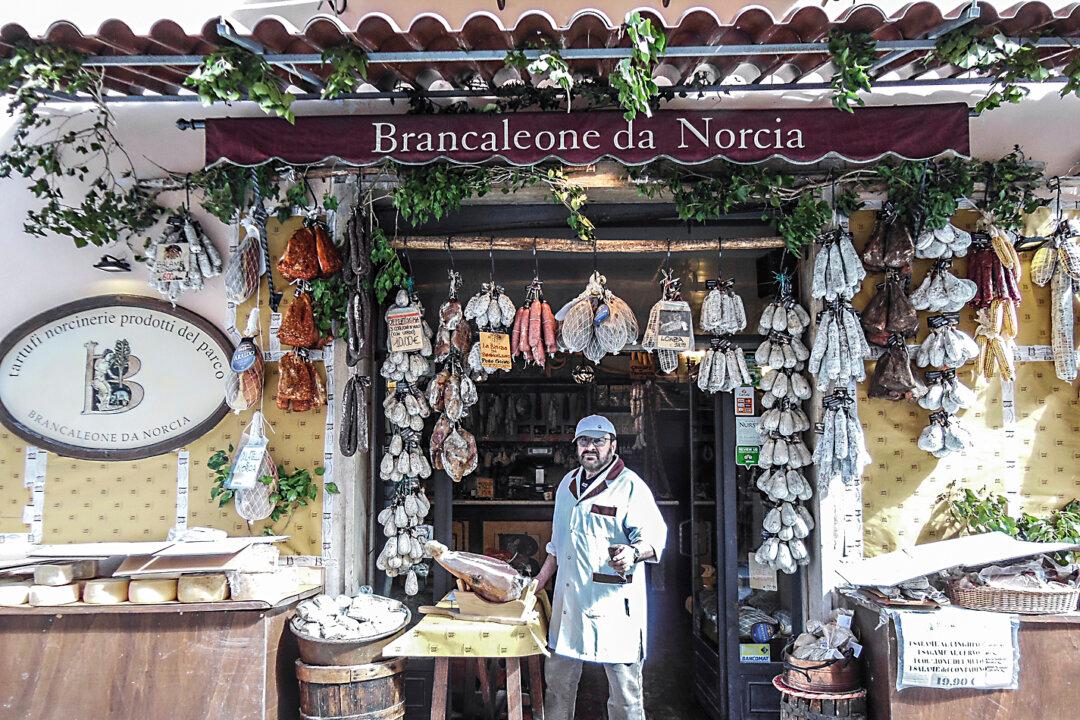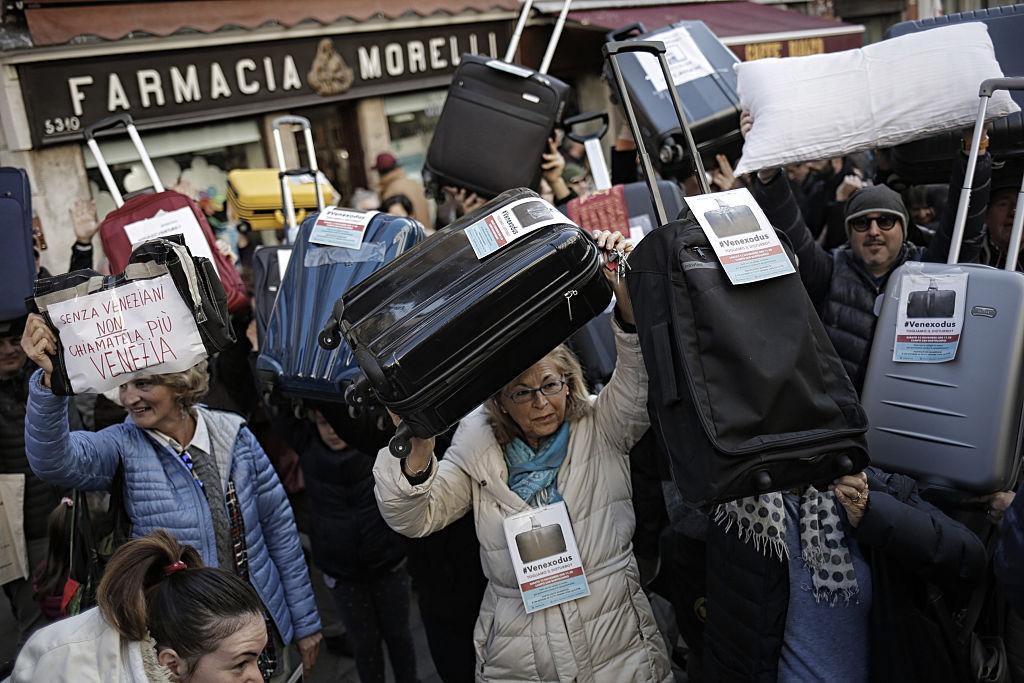NORCIA, Italy—The Chiesa della Madonna Addolorata, or Church of Our Lady of Sorrows, was a place of sanctuary for the people of Norcia, an ancient walled town in central Italy’s Umbria region.
Then its centuries-old roof was torn apart by a 6.6 magnitude earthquake—the country’s most powerful in nearly 40 years—on Oct. 30 last year.
Only the façade, with a niche containing a statue of St. Filippo Neri, a priest canonized in 1622, remains partially upright.
Opposite is a small shop selling fresh pasta, one of only a handful of premises in the town deemed safe enough to reopen ahead of what is usually a busy season for tourists.

The statue of St. Filippo Neri and the façade is all that remains of the Chiesa Della Madonna church. Photo by Angela Giuffrida



